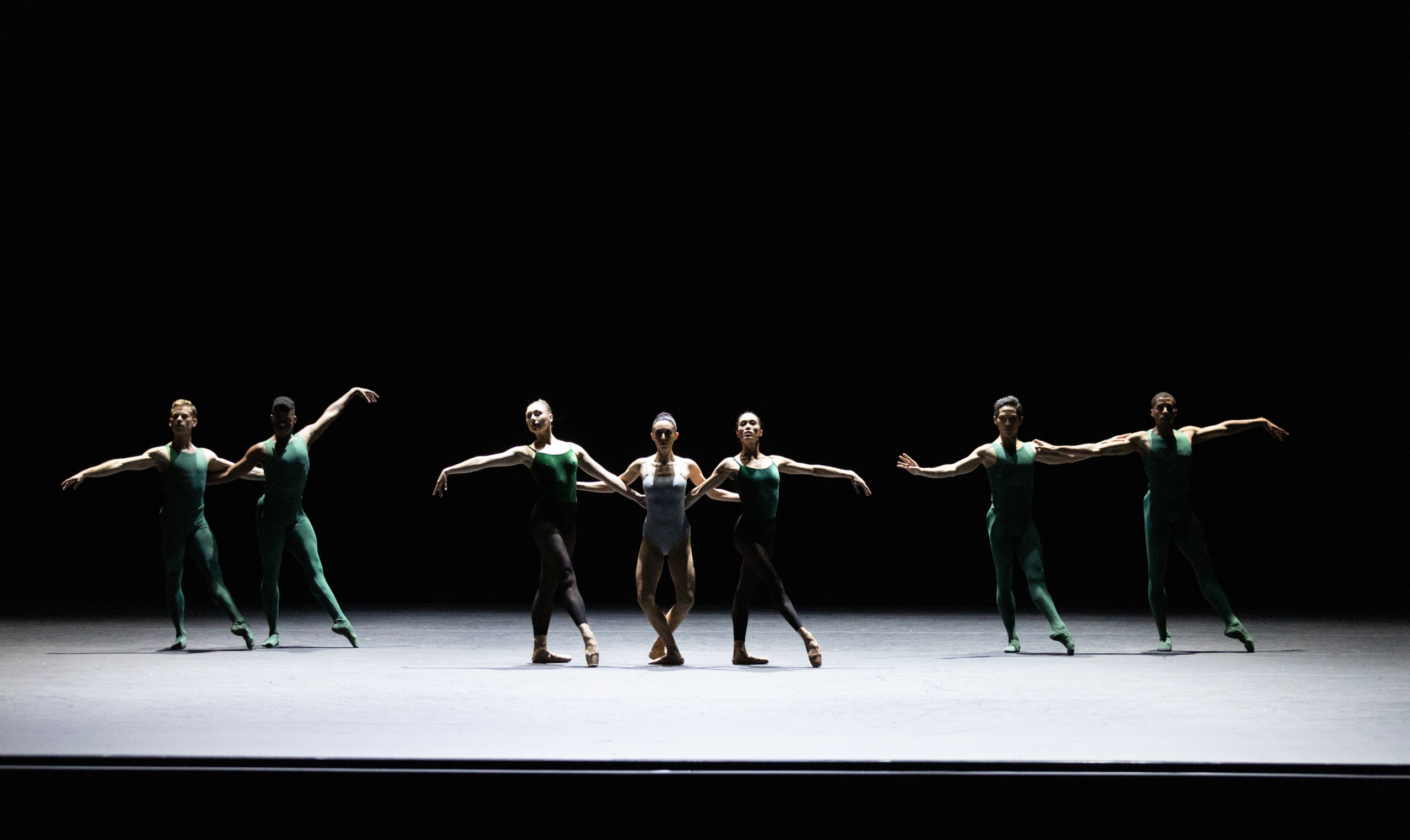Boston Ballet, William Forsythe’s “Artifact Suite.” Photograph by Rosalie O’Connor; courtesy of Boston Ballet
It was a love story. The show was filled with moments of drama, passion and humor. From the intricacies of each costume, to the placement and hue of each stage light, the attention to detail throughout the performance was incredible. The dancers were extremely talented and impressively trained. They moved like puppets, not people. I couldn’t help but think about how many countless hours of rehearsal time went on behind the scenes to make the show possible. The amount of sacrifice each dancer made, pushing the limits of what is physically possible.
Ballet is the most rigorous type of dance, requiring an intense level of strength, flexibility, control, endurance and physical fitness. Not only do these professionals need to maintain extremely high fitness levels and strength, but they are trained to exert this strength and physicality with grace and precision. A viewer can easily overlook the amount of hard work and effort behind each scene because it is performed with such apparent ease. As the dancers leaped, twirled, kneeled, held positions, and lifted each other, their movements appeared natural, smooth and precise. It seemed as if gravity didn’t apply to those figures on the stage.
Ballet originated during the Italian Renaissance during the 15th and 16th century. Noble men and women took part in dance performances which combined formal dance technique with costumes, scenery, and music. Their performances were spectacles put on to entertain guests at lavish events, with court families trying to outperform each other. Catherine de Medici (1519-1589) spread ballet from the Italian courts to France, after marrying King Henry II. Throughout the next century, ballet would spread throughout Europe, becoming increasingly formalized and acquiring specific terminology and identifiable positions of the feet and arms. It was King Louis XIV who established the Académie d'Opéra in 1669, beginning the tradition of ballet as a profession.
During the early 20th century, Russian choreographers began to branch out from traditional ballet form and story. Although the audience had a strong reaction to this shift, it was the beginning of the birth of neo-classical ballet. George Balanchine, a Russian immigrant, founded and choreographed the New York City Ballet in 1948 beginning its practice in the US.
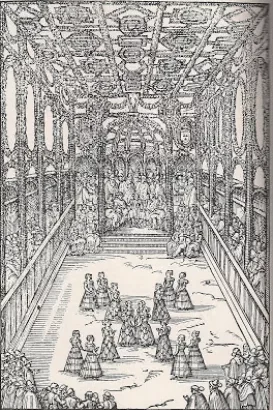
Ballet de Polonaise 1573
The Boston Ballet, founded in 1963 by E. Virginia Williams and Sydney Leonard, was the first professional ballet company in New England. In 1982 Rudolf Nureyev himself performed his play Don Quixote, playing the leading role of Basillo. In March 2023, over forty years later, the Boston Ballet performed this same show by Nureyev, and I was able to attend.
The storyline takes place in Spain. Don Quixote is an ill old man. He has hallucinations that cause him to pursue an imaginary lover, Lady Dulcinea, intending to save her from her prosecutor. Simultaneously, two young lovers, Kitri and Basilio, fall in love. Kitri’s father is adamantly opposed to the couple, insisting his daughter marry Gamache, a nobleman, instead of the young barber. Each act follows Kitri and Basilio as they run from her father and undesired suitor. Don Quixote and his neighbor Sancho follow them through their journey, causing distractions in Quixote's confusion and delirium. The play concludes with Basilio pretending to stab himself, while Kitri asks Quixote to help. Don Quixote forces her father to bless the lovers before they are parted forever, and Gamache challenges Don to a duel. Don Quixote defeats Gamache, and the lovers, with her father's misguided blessing, get married.
Given that there is no spoken script, understanding the specific details about each character might seem tricky without reading the premise of each act. However, the story is told through only dance and music, making the sensory experience truly profound. From the lights, setting, music, and of course choreography, the emotions and desires of each character are highlighted. Humorous moments had the audience erupting with laughter during multiple scenes. The orchestra seamlessly and precisely coordinated with the dancers. The music was crucial to moving the storyline along, helping to narrate the plot.
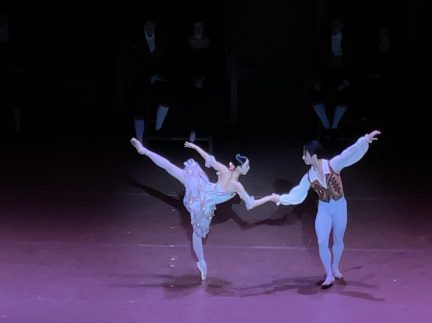
The Boston Ballet, Don Quioxte, 2023.
Photo by Brooke Gothelf
Walking into the Citizens Opera House theatre itself also prompted a feeling of awe and grandeur. I admired the intricate details of the chandeliers, mirrored french doors, the golden and marble ceiling to floor details, complimenting the red backdrop.
The building was built in 1928 by architect Thomas Lamb. At the beginning of the Great Depression, the structure was transitioned to a movie theatre. The brown and gold colors were replaced with blue, green and neon, losing its original charm. Business owners struggled to maintain the facility. Over the next few decades the theatre was resold several times, eventually becoming an Opera House in 1958. During the 1990's the building was completely abandoned, and used as refuge for the homeless, who reportedly wore left over opera costumes. In 1995, the National Trust for Historic Preservation declared the space an endangered landmark and the city set out to preserve it. From 2002-2004, the new owners spent 30,000 hours restoring the building. The architects revived the Lamb's original design and original decor, while modernizing all the internal workings. This 54 million dollar project gave the venue a new life, preserving the history and intricate details while utilizing today's technology. Experiencing a show in this venue is not something to be taken for granted.
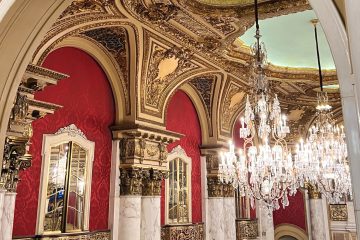
Boston Opera House, 2023
Photo by Brooke Gothelf
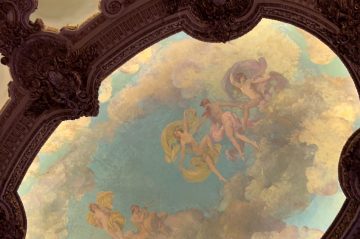
Boston Opera House Ceiling 2023
Photo by Brooke Gothelf
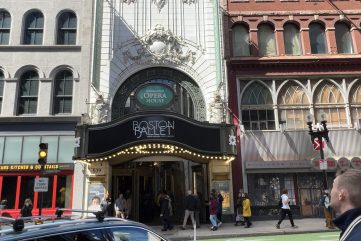
Boston Opera House, 2023,
Photo by Brooke Gothelf
Ballet is a classical art that continues to exist and evolve as a profession, hobby, and form of self expression. Living in a world saturated with instant gratification, special effects, and digital media. It is easy to lose sight of the significant and precious components of our culture. I was lucky to attend the performance at the Citizens Opera House in Boston, and witness my first live ballet. To be able to spend a night out, dress up, and watch the hard work of hundreds of dedicated individuals come to fruition is a real privilege. The dancers, stage crew, choreographers, directors, orchestra and even the architects all used their expertise and creativity to make my night at the ballet one to remember.
I was lucky to attend the performance at the Citizens Opera House in Boston, and witness my first live ballet. I highly encourage everyone to get in touch with this classical art form and find an appreciation for the inspiring talent and dedication of performing artists.

